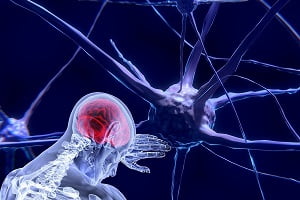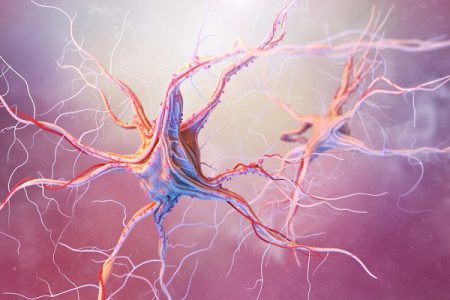Browsing: Neuroblastoma
Comprehensive Information, Resources, and Support on Neuroblastoma
Neuroblastoma
Neuroblastoma is a type of cancer which develops from immature nerve or neuroblasts primarily in the adrenal gland, neck, abdomen chest, pelvis or spinal cord. The infected cells may spread to other organs such as the bone marrow, bone, lymph nodes, liver and skin. The immature malignant cells are mostly found in[expand title=””]an embryo or fetus. It is estimated that neuroblastoma mostly affects children age 5 or younger. In some cases, neuroblastoma begins due to a gene mutation passed from the parent to the child. Neuroblastoma accounts for about 7% of all cancers in children.
Signs and symptoms of neuroblastoma
Some most common symptoms of neuroblastoma are:
– Pain in abdomen, neck, chest or bones
– Hard mass or lumps under the skin
– Diarrhea or constipation
– Difficulty in swallowing
– Fatigue, loss of energy, loss of appetite and weight loss
– Bulging or jerky eyes, pale skin, etc
Diagnosis and Treatment of neuroblastoma
For accurate diagnosis, several tests are recommended such as urine test, ultrasound scans, MRI scans, CT scans, mIBG (metaiodobenzylguanidine) scan, etc. In some cases, tissue biopsy or bone marrow biopsy are recommended to exact diagnose the disease.
Common treatments of neuroblastoma are surgery, chemotherapy, radiotherapy, immunotherapy, stem cell transplant, retinoid therapy, etc depending upon the stage of the disease.
For more information, check out Articles and Graphics below related to Neuroblastoma. Hope you enjoy the experience with DiseaseFix!
[/expand]
Cancer treatments can cause several changes to your body. There are some side effects of each type of cancer treatment, which different people experience differently. As you prepare yourself for cancer treatment, you may benefit from these coping strategies.
What You Should Know About Chemotherapy for Cancer
Chemotherapy is a widely used treatment for cancer. The term ‘chemotherapy’ refers to the drugs that prevent cancer cells from dividing and growing. It works by killing the cells that divide in an uncontrolled way.
The adrenal glands are two small glands that are located on top of each kidney. They’re part of your endocrine system that produces hormones. Adrenal glands produce hormones that are necessary for many vital functions. Adrenal cancer is a condition that occurs when abnormal cells develop in or travel to your adrenal glands.
Side Effects and Late Effects of Neuroblastoma Treatment
Neuroblastoma is a rare disease characterized by uncontrolled or abnormal cell growth resulting in the formation of a lump or mass called solid tumor. Children who undergo three or more kinds of treatment for neuroblastoma are at risk of developing severe side effects and late effects of the treatment.
Neuroblastoma is a solid tumor or cancer that occurs in the developing cells of the sympathetic nervous system. The cells…
Neuroblastoma is the most common malignant neoplasm that mostly occurs in neonates. Neuroblastoma is derived from the primordial neural crest…
Neuroblastoma (Children’s Cancer): Causes, Signs, Symptoms, Risks, Diagnosis, Prevention, Treatment, Stages
Neuroblastoma is a type of cancer that develops from immature nerve cells found in several areas of the body. These nerve cells are in their early developmental stages, found in embryo or foetuses. The word neuroblastoma consists of two terms where ‘neuro’ refers to nerves, and ‘blastoma’ refers to a cancer that affects immature cells.










